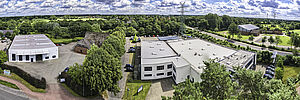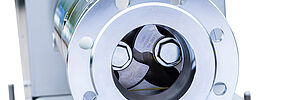Hygienic Pumps
Hygienic pumps are used wherever there is a need to convey sensitive products that must not be contaminated by germs or residues. This is especially the case in the food and beverage industry. But hygienic pumps are also required for pharmaceutical processes and special industrial applications.
Special requirements are imposed on hygienic pumps in terms of materials, surface quality and cleanability. The terms used in this area are not always consistent. What are known in Europe as hygienic pumps are referred to as “sanitary pumps” in the United States. In each case, parallel use of the terms is not accepted.
Organisations such as EHEDG or 3A Sanitary Standards, Inc. analyse hygienic pumps and other equipment for their suitability. EHEDG and 3A certificates therefore serve as an indicator of professional design of hygienic pumps. The approaches of these organisations varies. EHEDG certificates are based on empirical findings compiled during testing, while 3A certificates are based on a detailed analysis of design documentation. Hygienic pumps are usually made of grade 1.4404 (316L) stainless steel. For aggressive media, higher-grade stainless steels such as 1.4539 or duplex qualities are also used.
The purpose of a hygienic pump is to ensure that the pumped media are not contaminated while being conveyed. This means on the one hand ensuring that it is difficult for residues to accumulate in the pump, and on the other that they can be removed as easily and thoroughly as possible. Hygienic pumps have a high surface quality. The roughness is normally around 0.8µm.
For particularly delicate products in the pharmaceutical industry, the requirements are even higher, with roughness of less than 0.4 µm required. The smooth surfaces make it difficult for deposits to form and therefore make cleaning easier. Hygienic pumps must be cleaned at regular intervals. As a rule, this is done while they are installed in the system, a process known as CIP, or clean-in-place.
Cleaning is by means of high-temperature bases and acids and by a rinse passed through the system in larger volumes to achieve minimum speeds for safer cleaning. All components must be accessible. The pumps must therefore be designed to be free of dead spaces. HYGHSPIN twin-screw pumps offer a special advantage in terms of cleaning. They are not only free of dead spaces, enabling CIP cleaning, but can also be used as CIP feed pumps themselves. This means there is no need for additional CIP pumps, switching valves and control units, reducing costs and the risk of failure of a system.
There are many details to be considered with regard to hygienic pumps. For the elastomers, for example, suitable certified materials must be used and the issue of thermal expansion must be taken into account. For HYGHSPIN twin-screw pumps, moulded rings are used for static seals in order to rule out the possibility of product being embedded in grooves as a result of thermal expansion.
In addition to cleaning, hygienic pumps for aseptic applications are sterilised in the system on a regular basis. This is known as SIP = sterilise-in-place. Superheated steam at 130 °C to 145 °C kills germs, ensuring that the system is aseptic.










